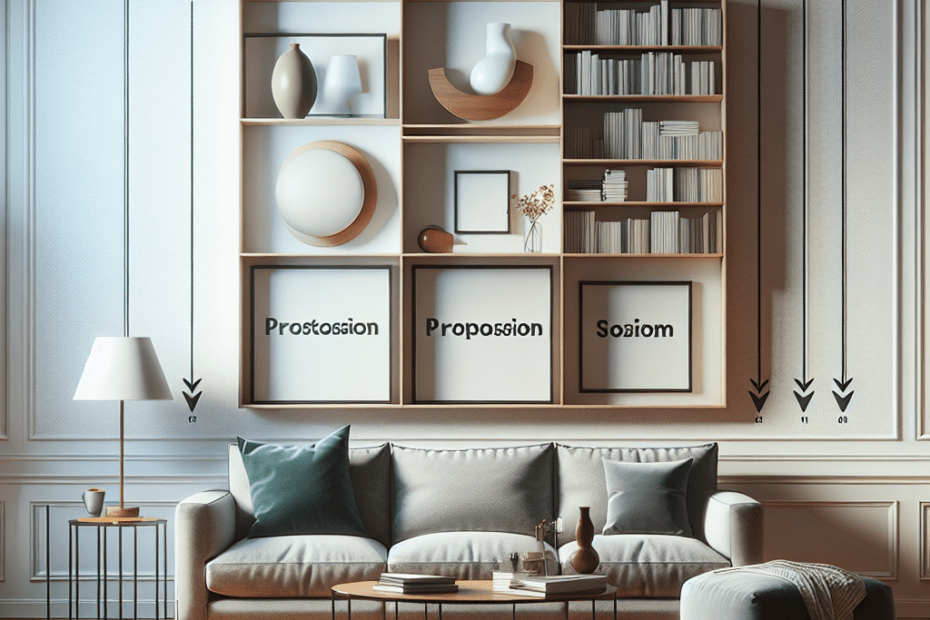The Role of Proportion in Furniture Arrangement
When arranging furniture in a room, many overlook the crucial aspect of proportion. In interior design, proportion refers to the relationship in size between different elements within a space. Understanding and applying this concept can transform a cluttered room into a harmonious, aesthetically pleasing environment. This post explores the significance of proportion in furniture arrangement, offering insights into how to achieve balance and style in any living area.
Why Proportion Matters
Proportion is essential in creating a balanced and inviting space. According to a survey by the Home Improvement Research Institute, 49% of homeowners consider functionality and layout as top priorities in home design (source: HIRI). By ensuring that the furniture pieces are proportionate to the room and each other, individuals can enhance the comfort and usability of their living spaces.
Understanding Proportion in Design
To grasp proportion in furniture arrangement, it’s necessary to understand key principles:
- Scale: This refers to the size of objects in relation to the room. Larger pieces are suitable for spacious areas, while smaller furniture fits better in compact rooms.
- Balance: Achieved when different elements are evenly spread throughout the space, avoiding cluster or emptiness.
- Harmony: This involves blending different pieces to create a seamless look. It’s crucial that furniture styles and sizes complement one another.
Applying Proportion to Your Space
Applying proportion involves several steps. Begin by considering the measurements of the room and the furniture. They suggest using a measuring tape to take precise dimensions of the room’s length and width.
Place the largest furniture piece first, like a sofa or bed, then arrange smaller items around it. This helps establish a focal point and foundation for the room’s layout. For instance, if they have a large sectional, they might place it against the longest wall to minimize spatial imbalance.
Using Proportion to Highlight Features
Furniture proportion isn’t just about fitting items into a room. It also involves highlighting architectural features. For instance, pairing a tall bookshelf next to a high window complements the room’s vertical lines, enhancing its height.
| Room Size | Suggested Furniture Arrangement |
|---|---|
| Small | Avoid oversized pieces; opt for multi-functional furniture like a sofa bed. |
| Medium | Mix of large and small pieces, maintaining equal space between them. |
| Large | Include statement pieces like large couches; ensure enough walkway space. |
Common Mistakes in Furniture Proportion
Pitfalls in furniture arrangement often stem from ignoring proportion. They might place all their furniture against the walls, leading to an empty center, or they might clutter a room with many items, causing disarray. To maintain proportion, one should leave space between pieces, facilitating movement and flow within the room.
Incorporating Style with Proportion
Even as they focus on proportion, style shouldn’t be compromised. Combining different textures, colors, and materials can help bring a room together while keeping proportion in check. A vibrant rug or cushions can add flair to a neutral-toned room without tipping the balance.
Key Takeaways
- Proportion in furniture arrangement ensures balance and aesthetic appeal in a room.
- Consider scale, balance, and harmony when arranging furniture.
- Place larger pieces first and arrange smaller items to create a focal point.
- Avoid common mistakes like clustering and failing to leave enough space.
- Blend style with proportion through colors and textures.
FAQ
- Q: Why is proportion important in furniture arrangement?
A: Proportion helps create a balanced and visually appealing living space, enhancing both function and aesthetics. - Q: How does scale affect furniture arrangement?
A: Scale ensures furniture pieces are suitable for the room size, preventing a cramped or overly sparse appearance. - Q: Can I still use bold colors and patterns while maintaining proportion?
A: Yes! Use bold colors and patterns sparingly as accents to keep the room balanced while adding personality. - Q: What’s the main mistake to avoid in furniture arrangement?
A: Avoid overcrowding and sticking furniture to walls without considering space for movement and balance. - Q: How can I measure my room for better proportion?
A: Use a measuring tape to take precise dimensions of your space, ensuring your furniture arrangement fits well within those limits.
